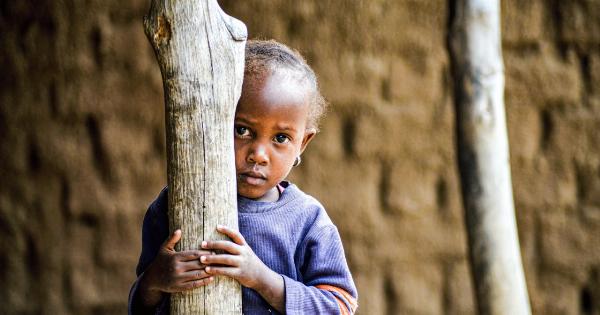Childhood asthma is a chronic condition that affects the airways, causing inflammation and constriction.
It is estimated that around 8.4% of children in the United States have been diagnosed with asthma, making it one of the most common long-term diseases in childhood. Understanding the symptoms and treatment options for childhood asthma is crucial for managing the condition and ensuring a good quality of life for affected children.
Symptoms of Childhood Asthma
Identifying the symptoms of childhood asthma is essential for early detection and timely intervention. Here are some common signs that may indicate the presence of asthma in children:.
- Wheezing: Wheezing is a high-pitched whistling sound that occurs during breathing. It is caused by the constriction of the airways.
- Coughing: A persistent cough, particularly at night or during physical activity, can be a symptom of asthma.
- Shortness of breath: Children with asthma may experience difficulty breathing, especially during or after exercise.
- Chest tightness: Asthma can cause a feeling of tightness or discomfort in the chest.
- Respiratory infections: Children with asthma may be prone to frequent respiratory infections, such as colds and bronchitis.
Causes and Triggers of Childhood Asthma
The exact causes of childhood asthma are still not fully understood. However, several factors can contribute to the development of the condition. These include:.
- Genetic predisposition: A family history of asthma or allergies increases the likelihood of a child developing asthma.
- Allergies: Exposure to allergens such as pollen, dust mites, pet dander, and mold can trigger asthma symptoms in susceptible children.
- Environmental factors: Certain environmental factors, such as exposure to secondhand smoke, air pollution, and respiratory infections in early childhood, can increase the risk of asthma.
- Respiratory infections: Severe respiratory infections during infancy can damage the airways and increase the likelihood of developing asthma later in life.
Diagnosis of Childhood Asthma
If your child exhibits symptoms of asthma, it is essential to consult a healthcare professional for a proper diagnosis. The following diagnostic methods are commonly used to determine if a child has asthma:.
- Medical history: The doctor will ask about your child’s symptoms, family history, and exposure to potential allergens or triggers.
- Physical examination: The doctor will listen to your child’s lungs and check for any signs of respiratory distress.
- Lung function tests: Spirometry and peak flow tests are used to assess lung function and measure the amount of air your child can exhale forcibly.
- Allergy testing: Allergy testing may be recommended to identify specific triggers that may be causing or aggravating your child’s asthma.
Treatment Options for Childhood Asthma
While there is no cure for asthma, effective management can help control symptoms and prevent asthma attacks. The primary goals of asthma treatment in children include:.
- Preventing and controlling symptoms: Medications, such as bronchodilators and corticosteroids, are prescribed to reduce inflammation and open up the airways.
- Avoiding triggers: Identifying and avoiding triggers, such as allergens, tobacco smoke, and pollution, can help minimize asthma symptoms and exacerbations.
- Creating an asthma action plan: Working with your child’s healthcare provider to develop an asthma action plan can ensure that you are prepared to manage asthma symptoms and know when to seek emergency medical care.
- Regular check-ups: Regular follow-up visits with healthcare professionals are crucial to monitor your child’s asthma control, adjust medication dosages if needed, and provide education and support.
Managing Childhood Asthma at Home and School
Managing childhood asthma requires a collaborative effort between parents, healthcare professionals, and schools. Here are some strategies to ensure asthma management at home and school:.
- Communication: Inform your child’s school about their asthma diagnosis and provide them with a copy of the asthma action plan. Educate teachers and staff about your child’s triggers and warning signs of an asthma attack.
- Medication management: Ensure that your child’s medication is easily accessible at school and that the staff is trained on how to administer it if necessary.
- Asthma-friendly environment: Advocate for an asthma-friendly environment at school by promoting good indoor air quality, reducing exposure to potential triggers, and ensuring proper ventilation.
- Encourage physical activity: Regular physical activity is beneficial for children with asthma. Work with your child’s healthcare provider to identify appropriate activities and ensure that your child’s asthma is well-controlled during exercise.
Preventing Asthma Attacks
Preventing asthma attacks is a crucial aspect of managing childhood asthma. The following preventive measures can help minimize the risk of asthma exacerbations:.
- Avoiding triggers: Take steps to identify and avoid triggers that may worsen your child’s asthma symptoms, such as allergens, tobacco smoke, and strong odors.
- Ensuring proper medication use: Teach your child to use their inhaler correctly and adhere to the prescribed medication regimen. Regularly discuss medication use with your child’s healthcare provider.
- Regular medical check-ups: Schedule regular follow-up visits with your child’s healthcare provider to monitor their asthma control, adjust medication as needed, and address any concerns.
- Immunizations: Ensure that your child receives all recommended vaccinations, including the annual flu vaccine, to reduce the risk of respiratory infections that can trigger asthma attacks.
Conclusion
Childhood asthma is a chronic condition that requires ongoing management and supervision. By understanding the symptoms, causes, and available treatment options, parents and caregivers can help their children lead healthier lives.
Early diagnosis, proper medication use, and avoidance of triggers are key to controlling symptoms and preventing asthma attacks. With a well-executed asthma management plan in place, children with asthma can enjoy an active and fulfilling childhood.





























